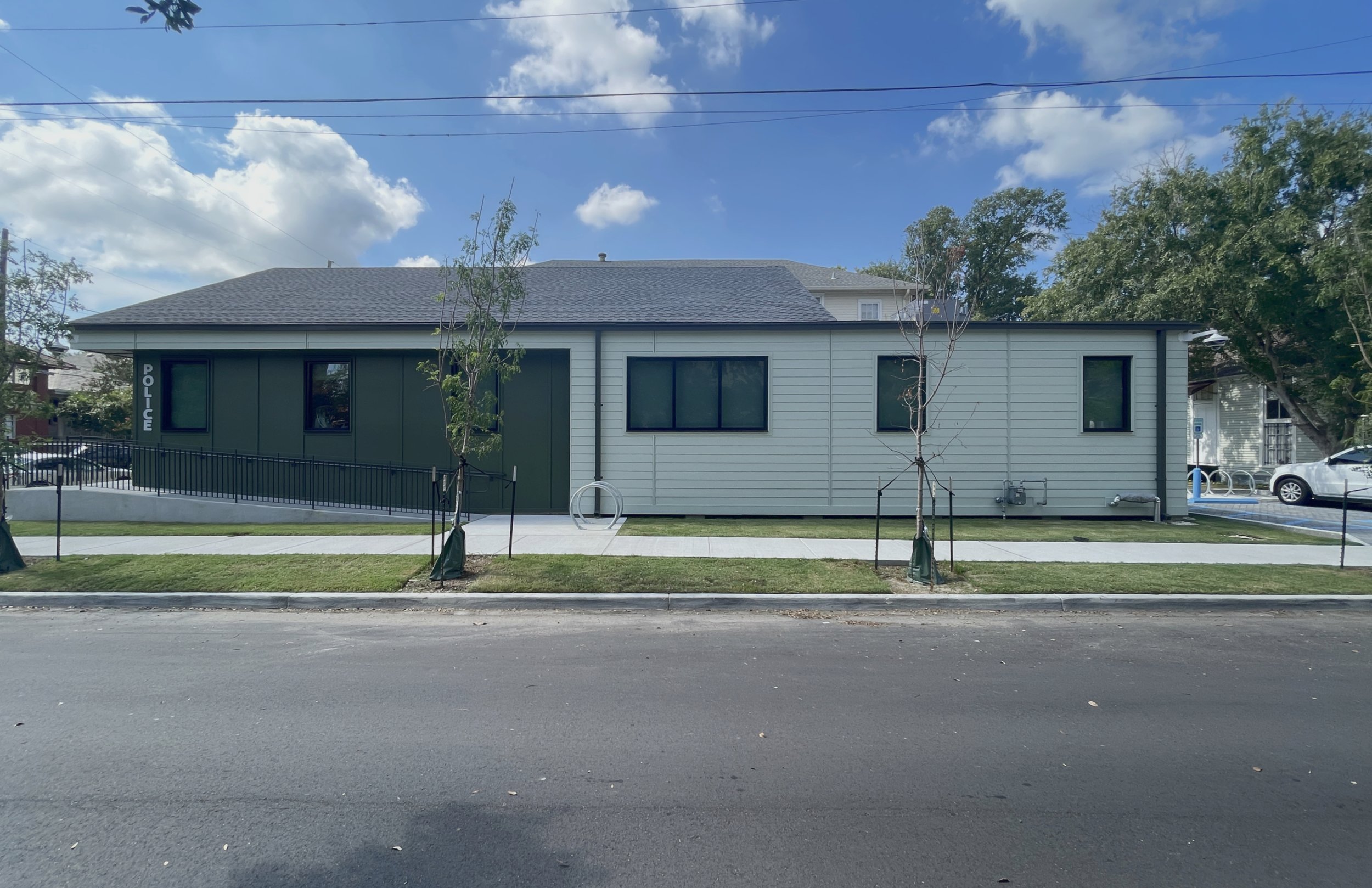TULANE UNIVERSITY POLICE DEPARTMENT
LOCATION: Uptown, New Orleans, Louisiana, USA
PROGRAM: Operations and Offices for Tulane Police Department
CLIENT: Tulane University
STATUS: Complete Summer 2023
PROJECT TEAM: GOAT (Architecture and Interiors); Batture LLC (Structural & Civil Engineering); Synergy Consulting Engineers (MEP Engineering); Pangea Construction (General Contractor)
Completed during a volatile time in the design and construction industries, GOAT collaborated with Tulane University to bring this long-planned station for the campus police department into reality. On a prominent street corner straddling the boundary between Tulane’s campus and the surrounding Uptown neighborhood, the massing was developed to relate directly to the project’s immediate residential context: on the front elevation, the simplified, enlarged gable form relates to the scale and silhouette of the adjacent three-story homes. On the side elevation, the gable falls away to a flat roof, relating more directly to the one-story, single-family shotgun homes behind it.
GOAT team: Paula Bechara, Peter Spera III, Colin VanWingen
The clapboard siding relates directly to the surface textures of the adjacent residential structures; this is contrasted with smooth panel cladding, cast-in-place concrete, and storefront glazing, communicating the building’s institutional purpose. Glazing is concentrated on its two public faces, which, given its 24-hour operation, will allow it to act as a beacon in the neighborhood, helping to keep its prominent corner activated at all hours without disturbing its residential neighbors.
Previous iterations of the project were more formally and materially ambitious; however, in reaction to the challenges presented by the pandemic, the project needed to be streamlined significantly. The design team responded by focusing intensely on the detailing of the simplified massing, ensuring that the building communicated the quality, thoughtfulness, and longevity that Tulane has fostered with its on-campus architecture, while controlling its complexity and cost.























